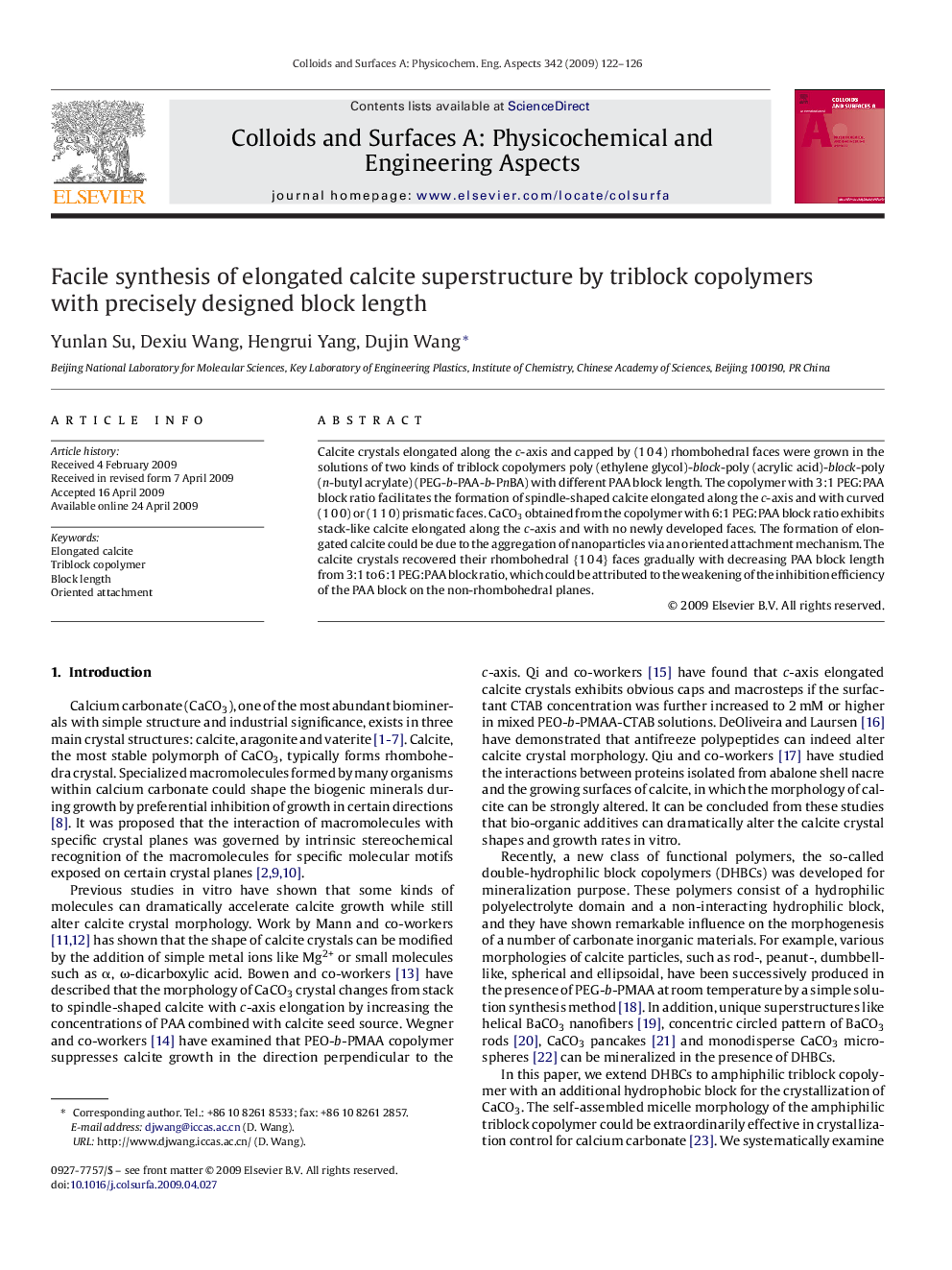| Article ID | Journal | Published Year | Pages | File Type |
|---|---|---|---|---|
| 595966 | Colloids and Surfaces A: Physicochemical and Engineering Aspects | 2009 | 5 Pages |
Abstract
Calcite crystals elongated along the c-axis and capped by (1Â 0Â 4) rhombohedral faces were grown in the solutions of two kinds of triblock copolymers poly (ethylene glycol)-block-poly (acrylic acid)-block-poly (n-butyl acrylate) (PEG-b-PAA-b-PnBA) with different PAA block length. The copolymer with 3:1 PEG:PAA block ratio facilitates the formation of spindle-shaped calcite elongated along the c-axis and with curved (1Â 0Â 0) or (1Â 1Â 0) prismatic faces. CaCO3 obtained from the copolymer with 6:1 PEG:PAA block ratio exhibits stack-like calcite elongated along the c-axis and with no newly developed faces. The formation of elongated calcite could be due to the aggregation of nanoparticles via an oriented attachment mechanism. The calcite crystals recovered their rhombohedral {1Â 0Â 4} faces gradually with decreasing PAA block length from 3:1 to 6:1 PEG:PAA block ratio, which could be attributed to the weakening of the inhibition efficiency of the PAA block on the non-rhombohedral planes.
Related Topics
Physical Sciences and Engineering
Chemical Engineering
Colloid and Surface Chemistry
Authors
Yunlan Su, Dexiu Wang, Hengrui Yang, Dujin Wang,
